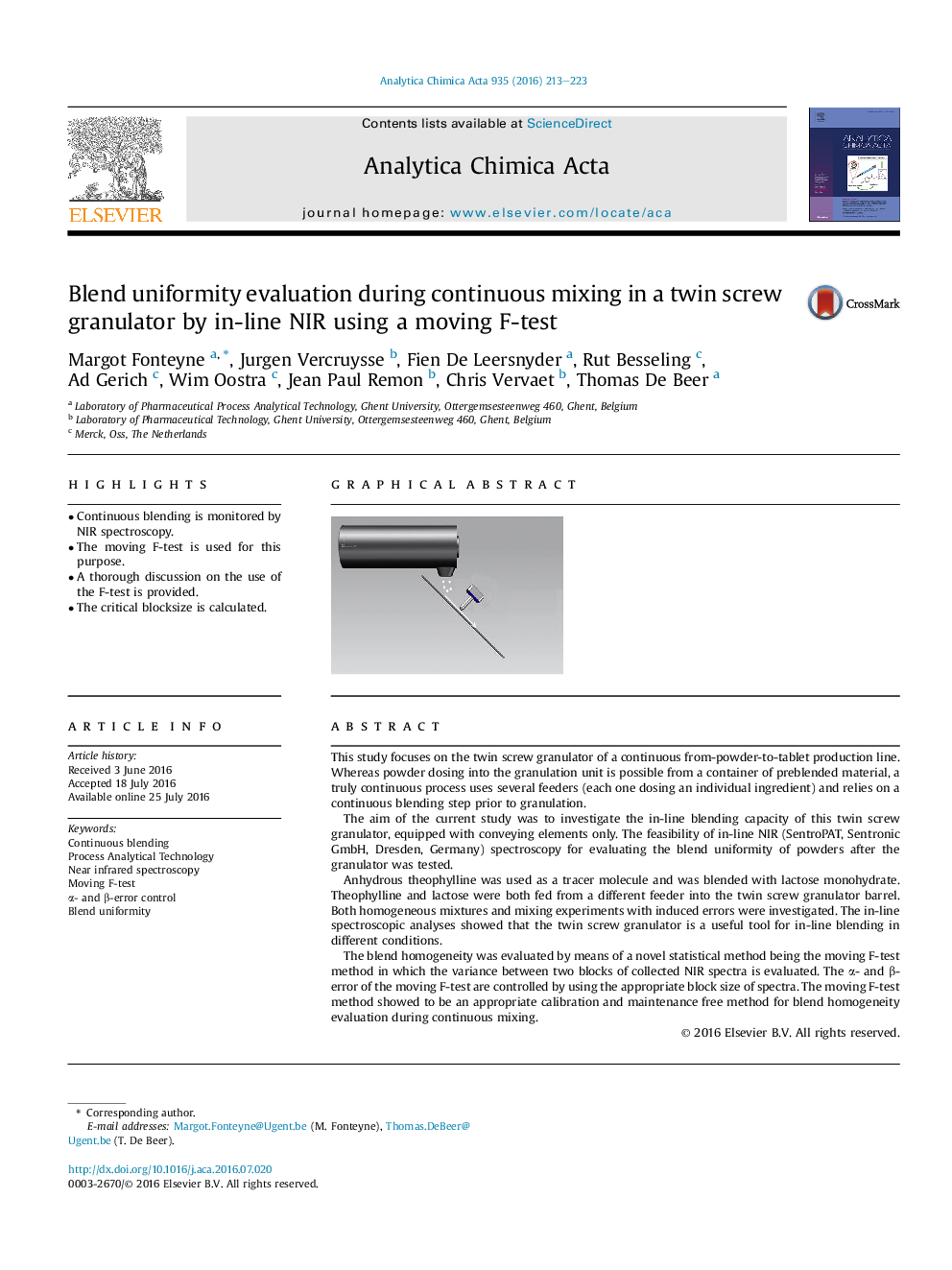| Article ID | Journal | Published Year | Pages | File Type |
|---|---|---|---|---|
| 1162808 | Analytica Chimica Acta | 2016 | 11 Pages |
•Continuous blending is monitored by NIR spectroscopy.•The moving F-test is used for this purpose.•A thorough discussion on the use of the F-test is provided.•The critical blocksize is calculated.
This study focuses on the twin screw granulator of a continuous from-powder-to-tablet production line. Whereas powder dosing into the granulation unit is possible from a container of preblended material, a truly continuous process uses several feeders (each one dosing an individual ingredient) and relies on a continuous blending step prior to granulation.The aim of the current study was to investigate the in-line blending capacity of this twin screw granulator, equipped with conveying elements only. The feasibility of in-line NIR (SentroPAT, Sentronic GmbH, Dresden, Germany) spectroscopy for evaluating the blend uniformity of powders after the granulator was tested.Anhydrous theophylline was used as a tracer molecule and was blended with lactose monohydrate. Theophylline and lactose were both fed from a different feeder into the twin screw granulator barrel. Both homogeneous mixtures and mixing experiments with induced errors were investigated. The in-line spectroscopic analyses showed that the twin screw granulator is a useful tool for in-line blending in different conditions.The blend homogeneity was evaluated by means of a novel statistical method being the moving F-test method in which the variance between two blocks of collected NIR spectra is evaluated. The α- and β-error of the moving F-test are controlled by using the appropriate block size of spectra. The moving F-test method showed to be an appropriate calibration and maintenance free method for blend homogeneity evaluation during continuous mixing.
Graphical abstractFigure optionsDownload full-size imageDownload as PowerPoint slide
